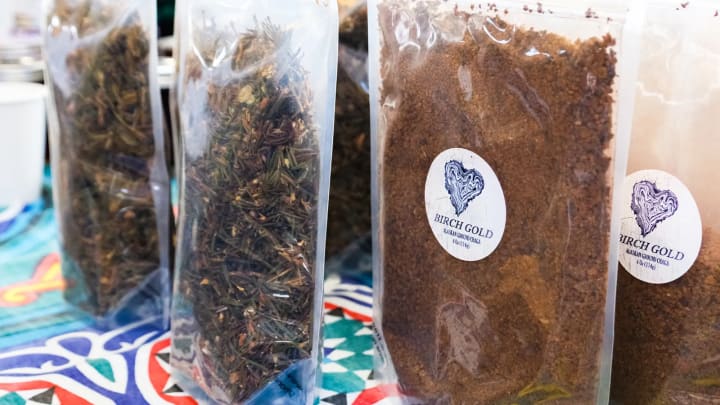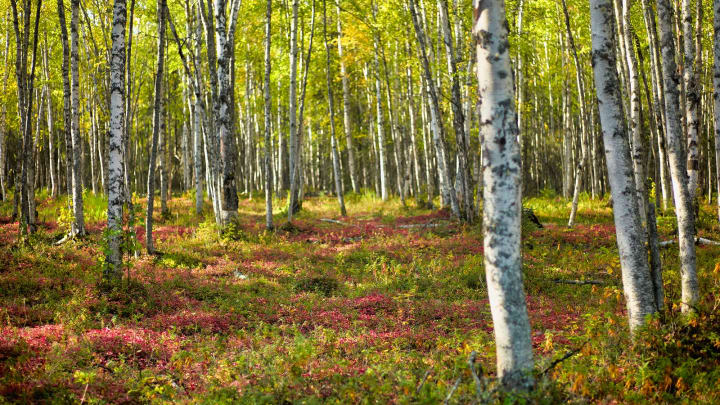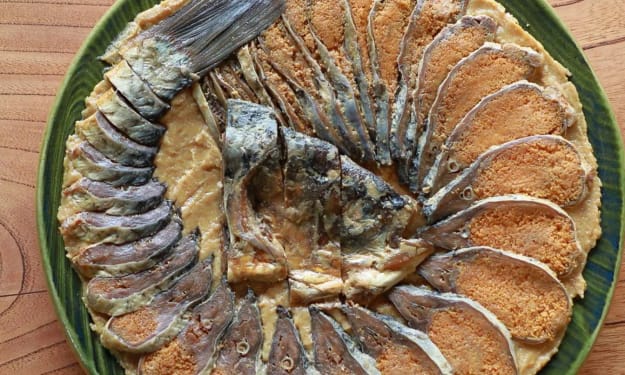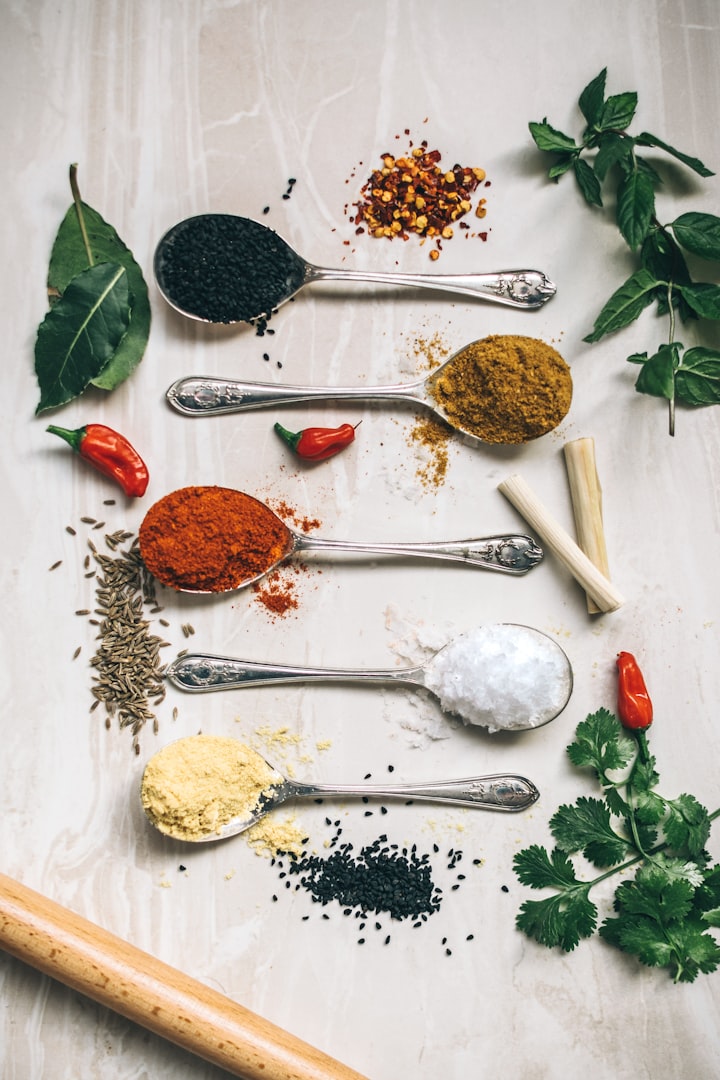Alaska's 'mushroom of immortality'
Humans have used chaga for thousands of years. But its popularity is shining new light on forest medicinals.

Black Gold. The Diamond of the Forest. The Mushroom of Immortality. Hearing the chaga fungus referred to by its many nicknames, it's easy to imagine sparkling gemstones and tendrils of precious metals hanging from trees. Instead, chaga protrudes parasitically on the trunk of the boreal birch; bulbous, black and more reminiscent of bark than fungi.
But a fungus it is. And a powerful – or at the very least, powerfully popular – one at that. While people in Russia and parts of Asia have been utilising it for thousands of years as a remedy for scores of ailments, chaga has only recently started growing in popularity in more western cultures. Perhaps nowhere more prominently than in Alaska, where the culture of foraging for food and medicine alike is strong. If the hype is to be believed, chaga, especially Alaskan chaga, may be the most potent medicine the forest has to offer.

I didn't yet know any of this as I let Callen Troy Christensen, CEO of Fairbanks' Chaga Co-operative, pour me a small cup of chaga tea the colour of weak coffee at a farmers market in Fairbanks, Alaska. I approached the table, intrigued by its wooden bowls piled high with grey and brown, delicate and dense, rippled and smooth mushrooms and fungi. At the far end I spotted an unfamiliar mound of lumpy and irregular black and orange nuggets labelled "Chaga". I asked about them, and as I sipped the earthy-sweet, almost coffee-like substance he had carefully prepared just for curious passersby like me, Christensen told me the story of Alaskan chaga.
ChagaThe fungus, which only grows in boreal birch forests in the northern hemisphere, is especially prominent in Alaska's dense forests. Here, for those willing to venture into the woods, chaga can be found growing as woody conchs on the sides of live birch trees. A wad of mycelium fungus (mushrooms are the fruiting, reproductive body of a fungus, whereas mycelium is the root structure), chaga can take 20 years to mature into a grapefruit-sized chunk large enough to harvest.
The outdoors was our pharmacy. It was part of everyday life.
Most commercially available chaga is ground into powder and placed in capsules, added to tea bags or mixed into energy supplements. But at farmers markets and local shops in Alaska, where local foragers and healers share the wonders of chaga, visitors can learn a more hands-on preparation, a long steep in cooler-than-boiling water that creates a nutrient-dense tea scented like earth and vanilla. It can also be purchased as an alcohol-based tincture to be used as a tonic, supplement or natural remedy.
Humans have used chaga for centuries. Native people from Russia and Siberia were possibly the first to use chaga as a natural medicine. In the 12th Century, Tsar Valdimir Monomakh purportedly used it to cure his lip cancer. It was cited in medicinal texts as early as the 16th Century as a treatment for cancer, ulcers and tuberculosis. And in Finland during World War Two, a sweet beverage made from chaga was popular as a coffee substitute to improve energy and focus when coffee and sugar were in short supply.

Native communities in Alaska have a long history of foraging and using natural medicinals. And while many of the specifics have been obscured by colonisation, oral traditions and stories about the use of chaga have been passed down through the generations and maintained by tribal elders. "Living in the outdoors as we have for thousands of years, everything in the outdoors is important for survival," said Jon Ross, Culture Bearer for the Salamatof Tribe of the Dena'ina Athabascan people. "The outdoors was our pharmacy. It was part of everyday life."
Alaska residents continue to celebrate a culture of foraging. Depending on the season, they can be found wandering the trails and woods and hillsides of the state with a bucket or basket, searching for blueberries, fireweed or fungi. "Alaska's been hunter-gatherer-foragers since, well, that's kind of our thing," said Kate Mohatt, an ecologist for Chugach National Forest and founder of the Turnagain Arm Mycological Society.

But it's only in the last decade that chaga has found its way into the mainstream in wider western cultures and come to be known as a medicinal "superfood".
The fungus has been touted as a potential miracle cure-all by fans, foragers and alternative medicine advocates for everything from cancer to the common cold. But so far, there are few scientific studies to back up such claims. While animal and in-vitro studies show encouraging results in the areas of cancer, inflammation and immunity, human studies are few and far between, leaving chaga little more than an unconfirmed folk remedy.
The fungus' all-encompassing healing powers may be up for debate, but its overall nutritional properties are more certain. It contains an abundance of vitamins, minerals and nutrients, including high amounts of antioxidants, plant sterols and amino acids. "It's full of vitamins and minerals we should be ingesting on a daily basis to keep our bodies healthy," said Kayla Hegna, co-owner of Fairbanks-based Arctic Chaga, a family-owned company that forages and sells chaga products.

"Many nutrients come from the tree itself, not the fungus," Mohatt explained. The chaga, which is essentially a parasite living off the birch tree, digests those nutrients, concentrates them and makes them more bio-available to humans; a miraculous feat of nature.
But chaga requires cold temperatures to grow, the more extreme the better. In fact, the more extreme the temperature change throughout the year and the more stress the birch tree endures because of those changes, the more nutrient-dense the chaga. That makes Alaska, which can see temperatures in excess of 32C (90F) in the summer and -45C (-50F) and below in the winter, an ideal natural growing region. And that means the state might just be home to some of the most potent chaga on the planet (and a great place to get your hands on some of the local fungus). In a test commissioned by Arctic Chaga, the antioxidant count of the local chaga exceeded that of a Siberian variety by nearly 40%.
Alaska may also be harvesting the medicinal fungus in the most sustainable way. "The majority of the market is being supplied by Russian logging companies where chaga is essentially a by-product of clearing the boreal forest," said Christensen. Other major brands source theirs in bulk from countries like China.

In Alaska, small, often family- or community-owned operations, forage chaga by hand, careful not to over-harvest. Because not much research has been done on the reproductive cycle of chaga, many foragers are aware that over-harvesting could be detrimental to the fungus. Which is why organisations like the Chaga Co-operative are investing in long-term research, and local sellers process it on a small scale to ensure quality.
Many sellers in Alaska even provide educational guided foraging tours and classes. At farmers markets and local shops, they share samples and answer questions, giving visitors like me the chance to taste, touch and see that the wonders of Alaska's natural landscape are worth exploring.






Comments
There are no comments for this story
Be the first to respond and start the conversation.